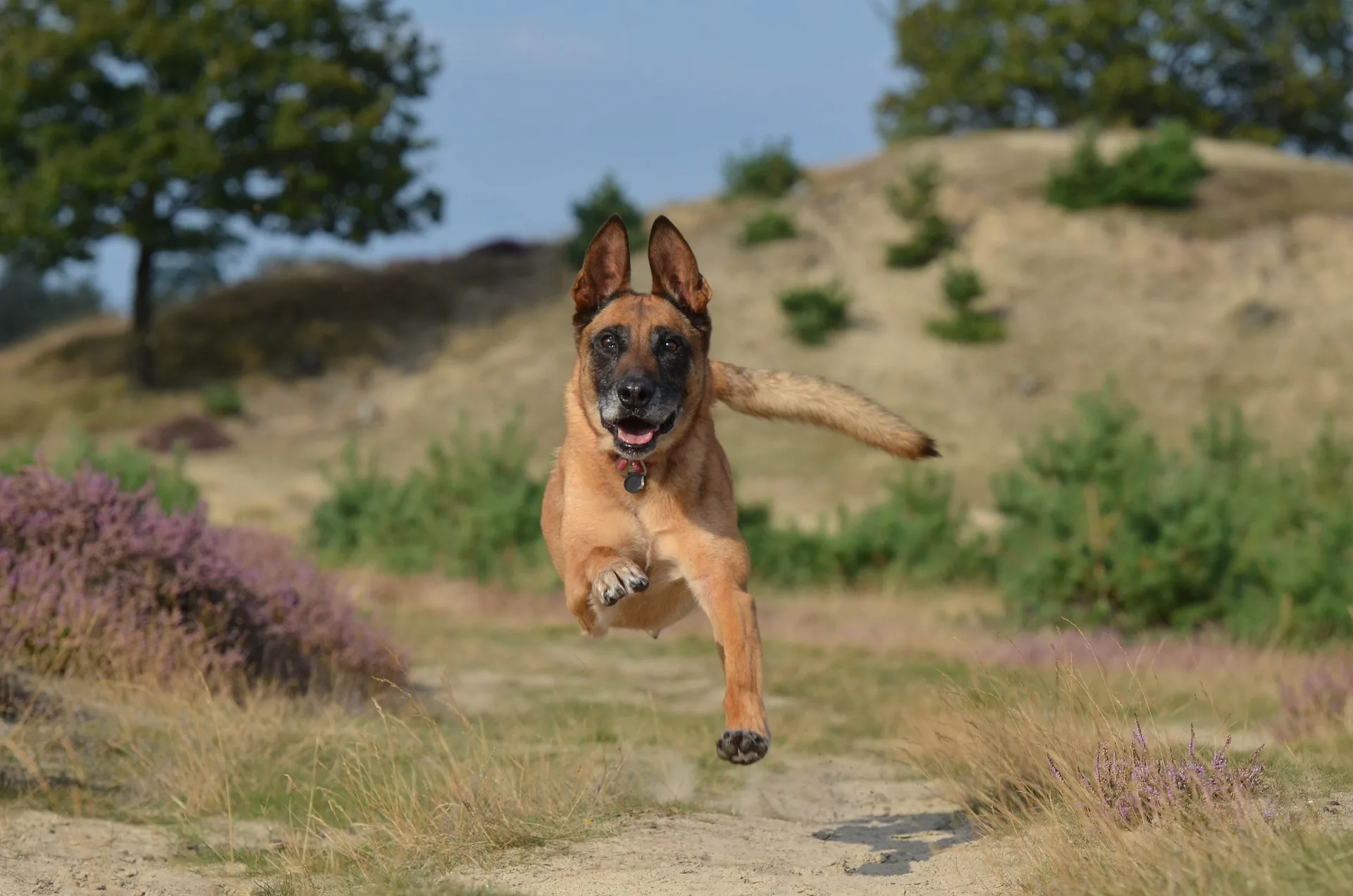Purebred Belgian Malinois dogs are stunning canines. They are powerful, strong, intelligent, and dominant dogs. But did you know that they come in many different colors? Most of us have seen the classic Malinois, with a tan coat and their signature black masking. But a lot of people don’t know that they also come with a red coat, in a fawn color, all black, liver, and more. Pet owners have a lot of options when choosing a Malinois puppy. But maybe you want a color that not many other people have, and you are wondering “What is the rarest color of Belgian Malinois?”.
That’s why in this article we will go over all the common and rare colors that a Belgian Malinois can have, and we will teach you everything that you have to know about each and every one of them. Because as insignificant and superficial as the coat color might seem to some people, it can actually play a role in many different aspects of your dog’s life.
All the Belgian Malinois coat colors
When it comes to the official colors of a purebred Belgian Malinois, things can get a bit complicated. Because not everyone seems to have the same understanding as to what a Belgian Malinois should look like. Worldwide, there are a lot of kennel clubs. The American Kennel Club (AKC), United Kennel Club (UKC), Canadian Kennel Club (CKC), and Fédération Cynologique Internationale are four of the biggest (FCI). Each of them has a different breed standard for the Belgian Malinois.
These kennel groups decide which Belgian Malinois colors are acceptable and which are not. For instance, if the American Kennel Club doesn’t recognize a Belgian Malinois color, dogs with that colored hue won’t be able to take part in dog shows that occur in the United States. The breed standard for a Belgian Malinois is therefore different from country to country. When it comes to the American Kennel Club, the five standard colors of a Belgian Malinois include fawn, mahogany, red, red sable, and fawn sable. The non-standard colors are black, brindle, cream, gray, liver, gray sable, and cream sable.
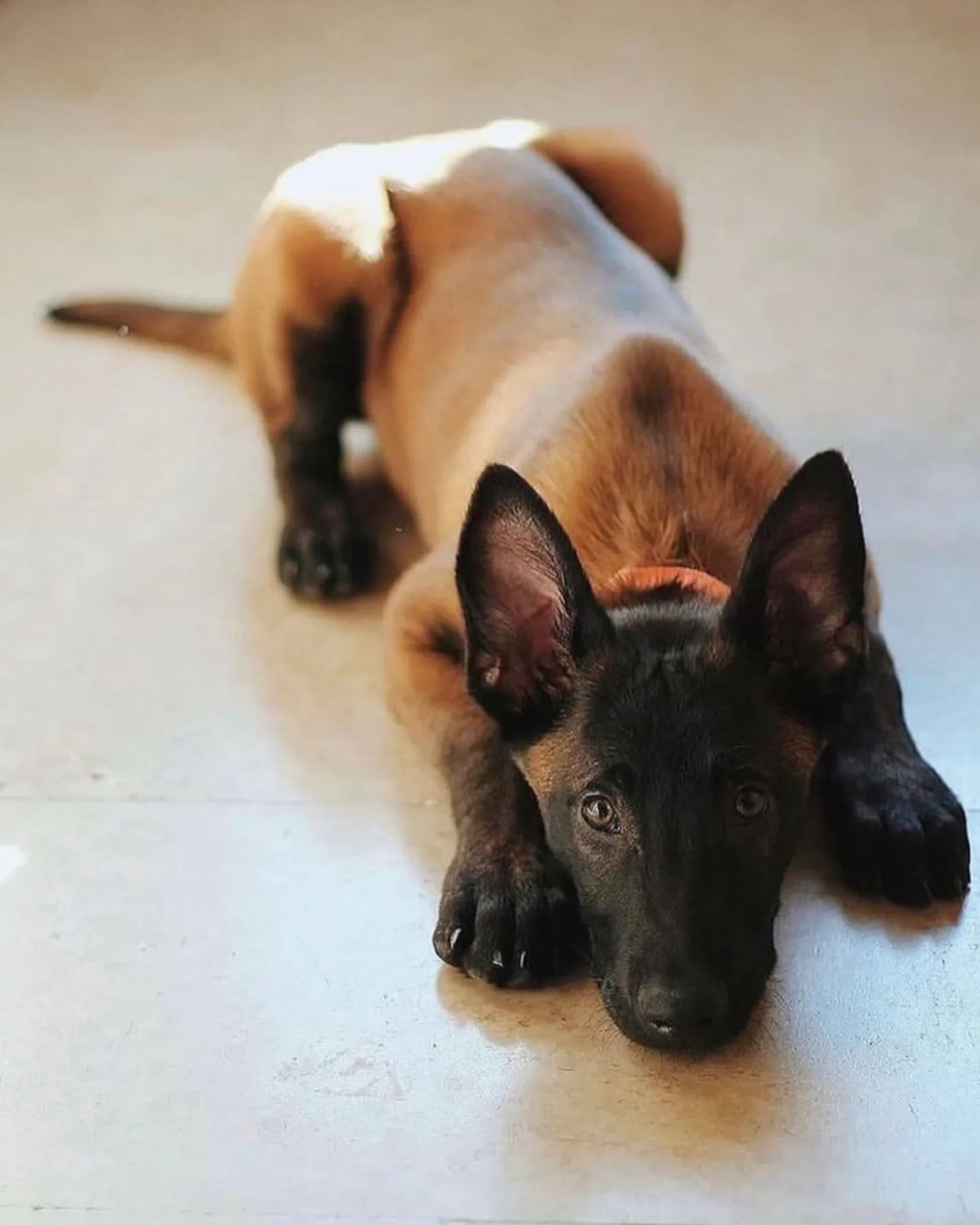
Source: Instagram (@malinois_worldwide)
Can you tell a purebred Belgian Malinois by color?
The short answer is no, you can’t. First of all, as we have already explained, various kennel groups have varying breed standards. Second, certain diseases or hereditary conditions may result in certain coat colors or patterns. For example, an albino dog will be white, and while he is a purebred dog, his coat color is not listed in the breed standard.
The only way to determine whether your Belgian Malinois puppy is purebred or not is to ask your breeder for pedigree documents or invest in pricey DNA tests. Otherwise, you can’t ever know with certainty. Sure, you can guess by the overall appearance of your dog, however, the thing with crossbreeds is that they usually always take more after one of their parent breeds.
And while the color of your dog’s coat can’t tell you if he is purebred or not, it will still influence if you can register him with the kennel club of your choice. For example, if your dog isn’t in one of the standard or non-standard colors that the AKC approves of, you won’t be able to register your puppy with this kennel club.
Belgian Malinois standard colors
Because we want to keep things as simple as possible, we will use the AKC breed standard during the remainder of the discussion about Belgian Malinois colors. We have already explained that according to the AKC, there are two types of Malinois colors, standard and non-standard. In this article, we will go over these hues, and we will also take a quick look at the colors that aren’t recognized by the AKC.
Fawn
One of the most popular hues of Belgian Malinois is fawn. Fawns can range in color from extremely light to very dark, with the majority of the time leaning toward a yellowish-tan hue. The majority of fawn Belgian Malinois have a black mask that covers their face, including their muzzle, nose, eye rims, and even their ears! It might make for a stunning contrast if the fawn is lighter in color.
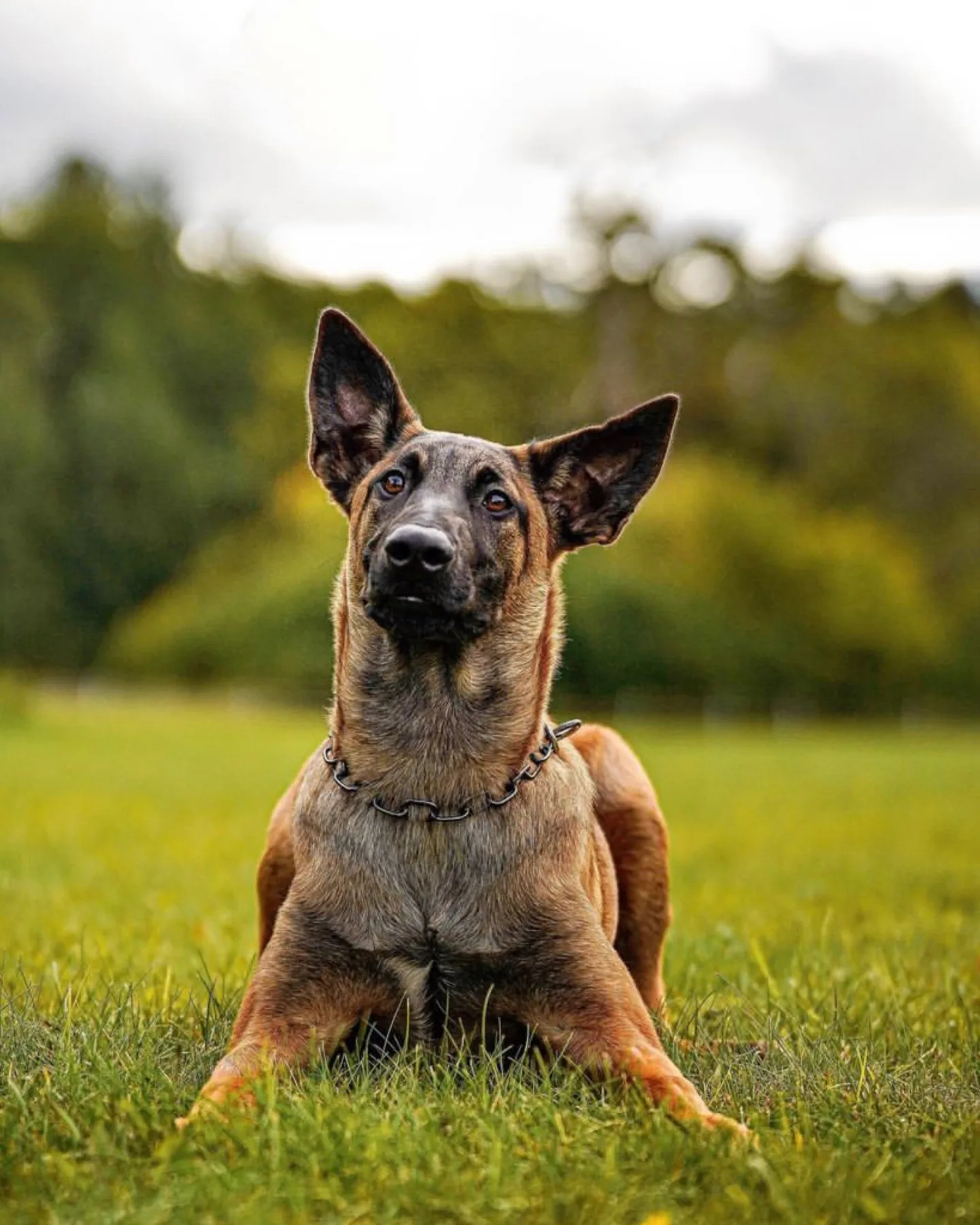
Source: Instagram (@saaraafk)
Fawn Sable
Belgian Malinois with a sable pattern in fawn has the same appearance as standard fawn Mals. If you’re wondering what sable is, it’s when any base color—in this case, fawn—has black tips on the hairs. They appear darker than typical canines of the same hue because of this. Many dog owners are completely unaware that their Belgian Malinois is sable until the veterinarian or groomer informs them of this. This is true because some sable dogs merely have the appearance of being a darker variation of a particular color. Because sable dogs already have black color in their fur, their black mask might not be as obvious.
Red
Red Belgian Malinois, as their name suggests, have coats that are some shade of red. These dogs can range in color from deep red to ginger. Some even mistake them for having a deep fawn coat color. Depending on how light their coat is, the prominence of their black mask will vary. The majority of these canines will have black noses, ears, and eyes.
Red Sable
Dogs with red sable Belgian Malinois have black points on their hair, just as those with fawn sable, however this time the base coat color is red. Depending on the hue of their base coat, these canines might appear quite black. Red sable dogs should have a black snout and extremely dark eyes. The black mask on these dogs might not be as obvious as the mask on pure red dogs.
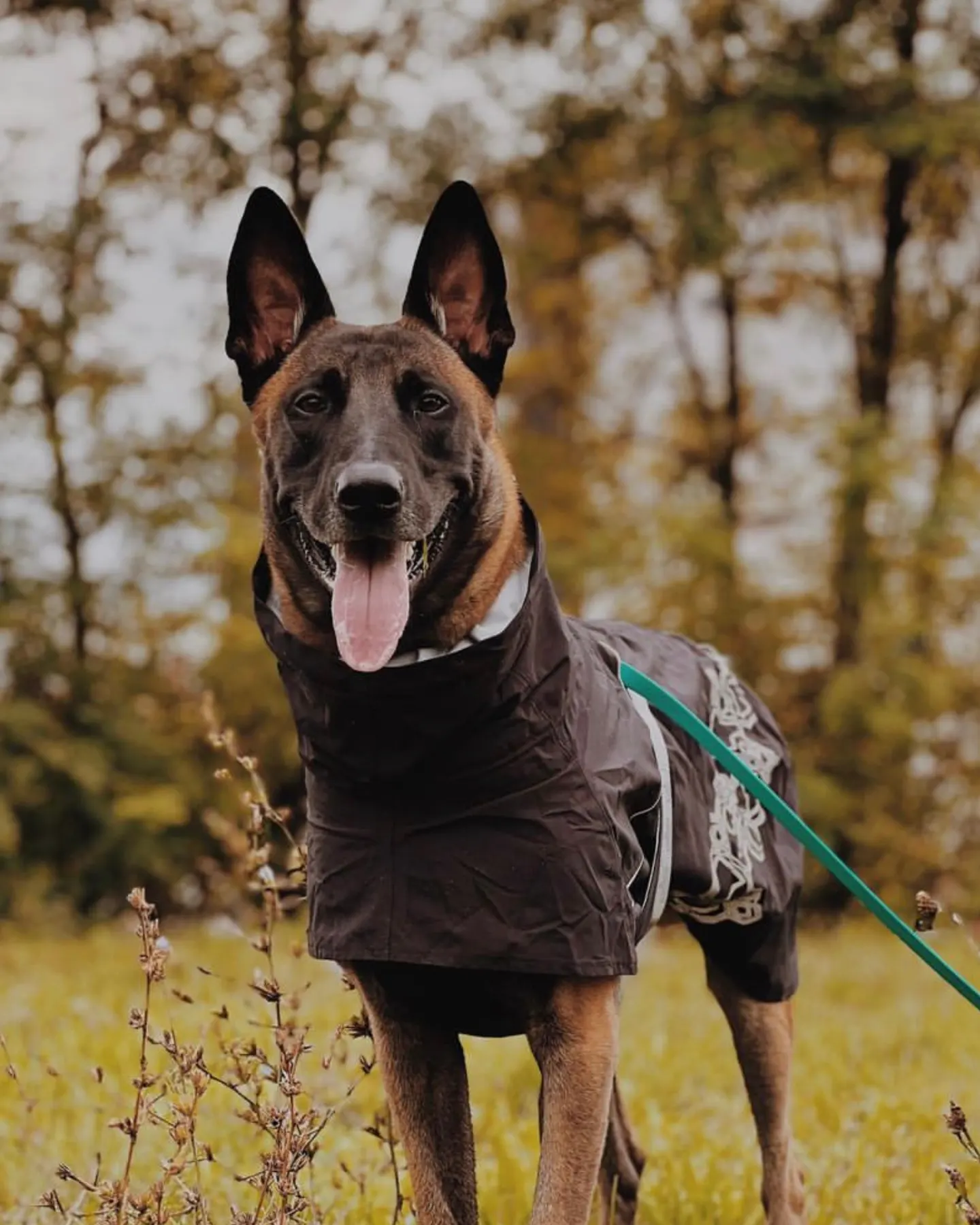
Source: Instagram (@rufusmaligator)
Mahogany
Malinois can range in mahogany color from a mild reddish-brown to a very dark, nearly black hue. These canines tend to be quite dark, thus a black mask might not stand out very much on them. They also have dark brown eyes and black noses. This color is indeed considered harder to find than the standard fawn or red colors.
Belgian Malinois non-standard colors
These coat colors are also recognized by the AKC, although they are not regarded as conforming to breed standards. As a result, even though you can register these puppies with the kennel club, they are ineligible to compete in dog shows. While this won’t be an issue for most dog owners, the ones who are interested in dog shows should pick a Malinois in one of his standard colors.
Black
Black is actually quite uncommon in many dog breeds, including the Belgian Malinois . Most will have at least a single patch of a different color, like a white mark on the chest. These dogs’ noses, eye rims, paw pads, and lips should match their black coats. Therefore they have dark brown or black eyes. Black Belgian Malinois are extremely sought-after, and their demand is growing despite the fact that they can’t compete in dog shows. But looking at their elegant appearance, it’s not too difficult to understand why.
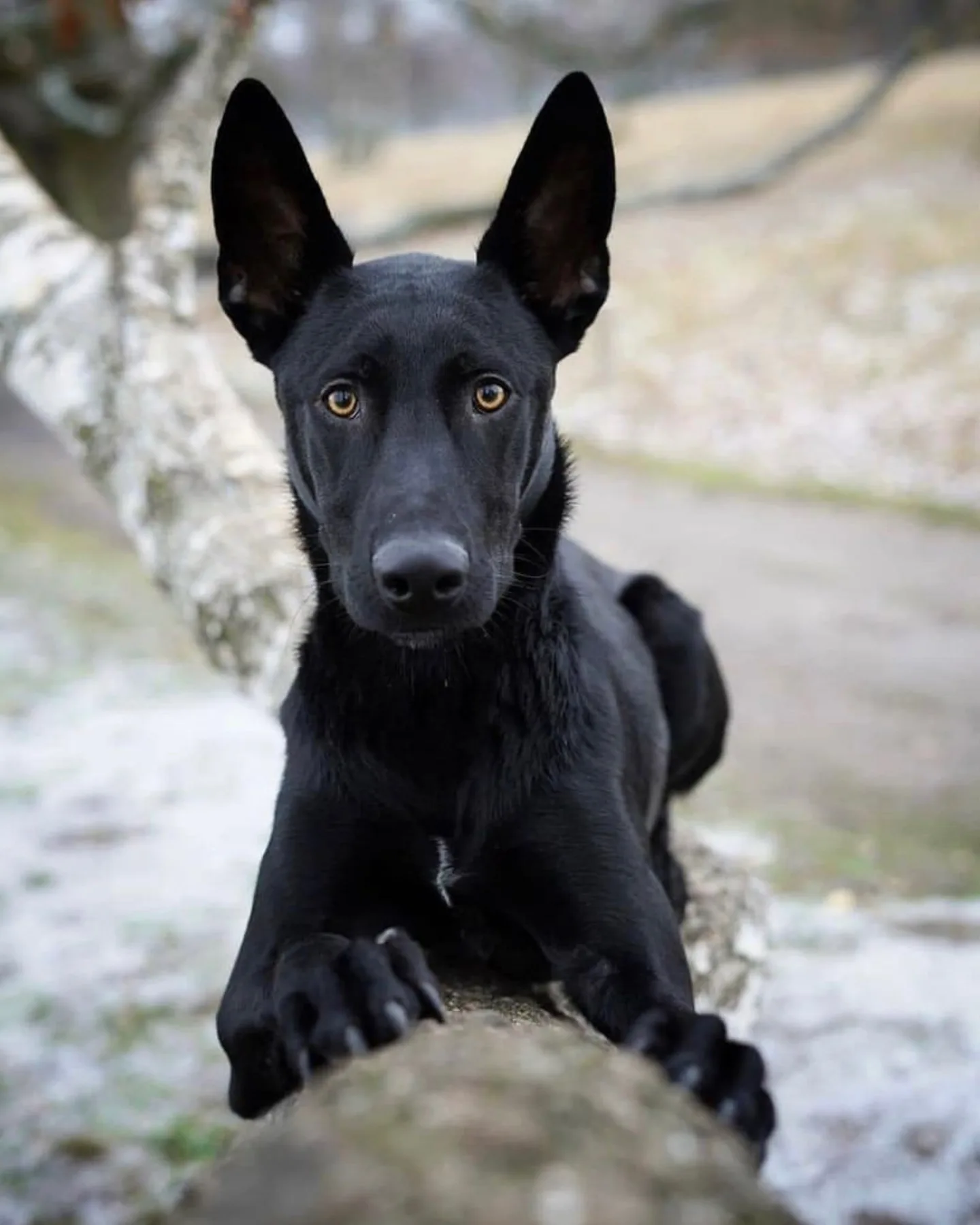
Source: Instagram (@epic_malinois)
Brindle
Brindle is one of the most distinctive coat colors, or should we say coat patterns. Dogs with brindle coats have tiger-like stripes. Any dog with black stripes, no matter how wide or thin, is a brindle. Any base coat color can develop brindle patterns, although, in Belgian Malinois, it typically develops on fawn or red. They can have a full or partial brindle on their coat. Some brindle Mals don’t have the signature black masking because of the peculiar way the color is distributed throughout their bodies.
Cream
Cream is one of the most common colors in the majority of dog breeds. With Belgian Malinois, who hardly ever come in cream, this isn’t the case. Due to the strong color difference between the two tones, cream Belgian Malinois have a black mask that is fairly distinctive. These puppies also have dark eyes, noses, lips, paw pads, and eye rims despite the fact that the majority of their fur lacks dark color.
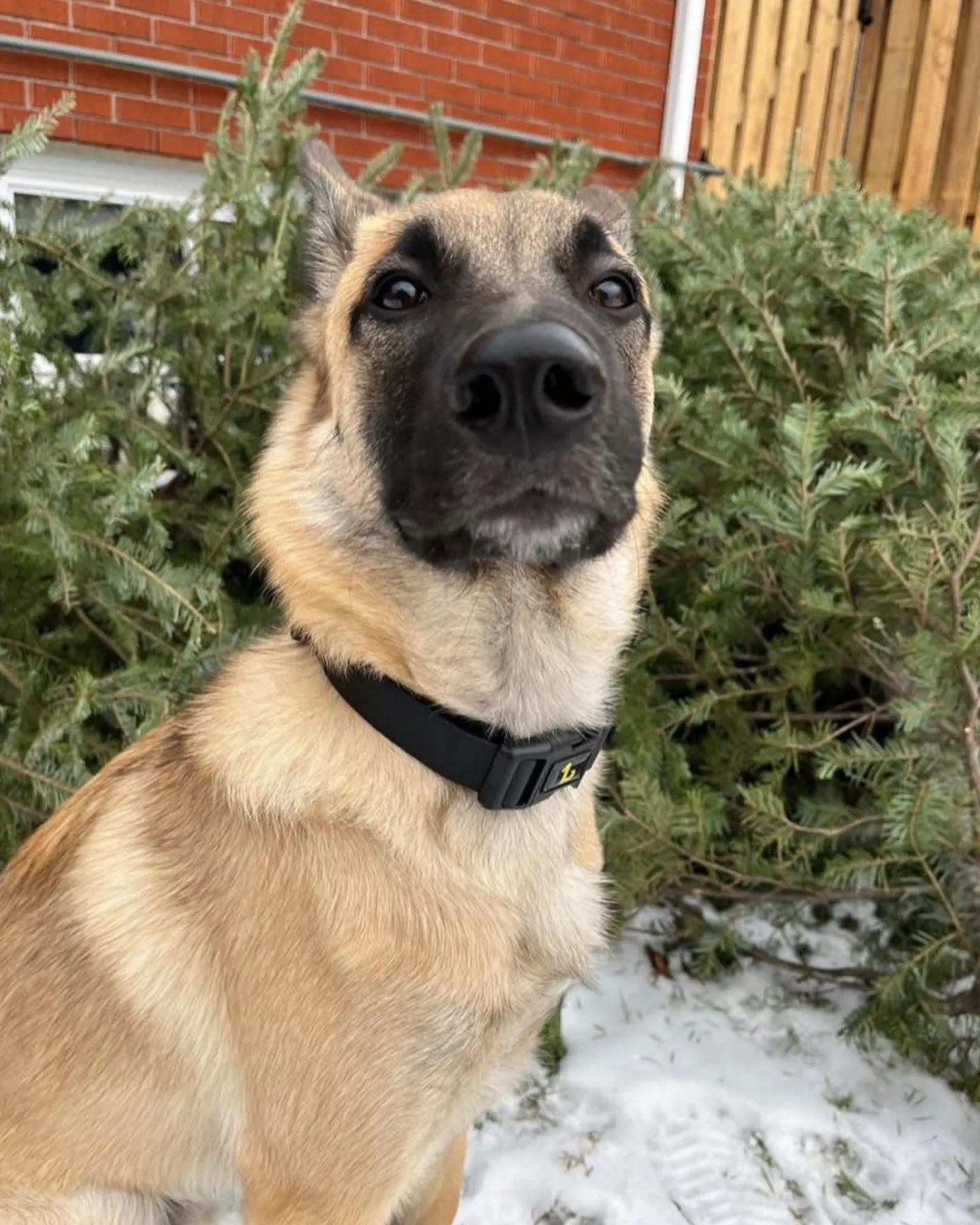
Source: Instagram (@belgian.malinois.smiling)
Cream Sable
Once more, sable is nothing more than black hair tips. These black tips are quite noticeable in cream sable Belgian Malinois due to the base color’s lightness. The majority of cream sable Belgian Malinois won’t have a pronounced black mask since the pigmentation will remain somewhat smeared.
Gray
Gray, which some breeders also refer to as blue, is the outcome of a dilution gene interfering with the black base coat, becoming a charcoal gray that occasionally may have a blue tint. Since the dog’s entire body is affected by this dilution gene, its nose, eye rims, and paw pads should also be dark gray or blue.
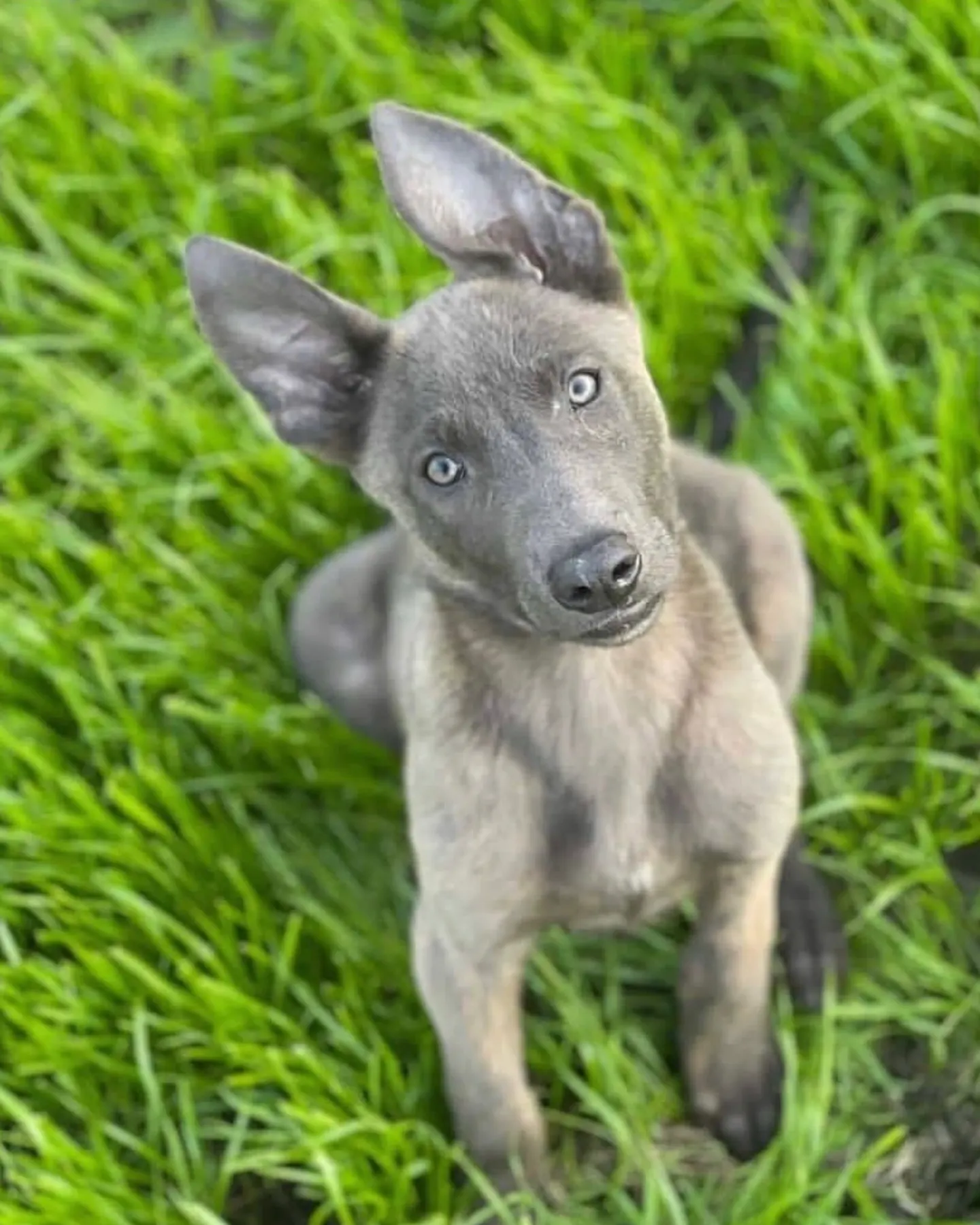
Source: Instagram (@epic_malinois)
Gray Sable
Gray Belgian Malinois with black hair tips are known as gray sable Malinois. It can be challenging to determine whether your Belgian Malinois is sable or not because these puppies already have a very dark base color. These dogs should always have gray noses, ears, paw pads, lips, and somewhat lighter eyes than normal, just like gray Belgian Malinois.
Liver
The liver hue is brought on by a dilution gene, just like gray. Liver Belgian Malinois can have any shade of red, yellow, or cream. The dog’s nose and paw pads should also be liver because this dilution affects the animal’s entire body. On the other hand, the color of its eyes should be light brown, if not amber.
Belgian Malinois Rare Colors
Now that we have talked so much about all the different colors that Belgian Malinois comes in, we still haven’t answered which the rarest one is. Just because these colors are all recognized by the AKC, doesn’t mean that they are all equally as common. In fact, several of them can be regarded as being quite rare. Brindle is the least common permissible coat color in Belgian Malinois. There are two plausible explanations for this. First off, a recessive gene is responsible for the brindle pattern on the coat of these canines. This implies that a dog does not necessarily have a brindle coat just because the brindle gene can be identified in the dog’s genetic makeup. Instead, it must come from both parents.
The Most Popular Colors of Belgian Malinois
The most popular and probably most common color of the Belgian Malinois is without a doubt fawn. If you have ever seen a Belgian Malinois in your life, chances are that he had a fawn coat with a black mask. But there are other pretty common colors as well. Red and mahogany are common colors too. But sable fawn and sable red aren’t too rare either. All of them will have the iconic black masking, but it won’t be equally as noticeable on all coat colors. According to the AKC, this is the only kind of marking that is permitted. Except for liver and grey, all Belgian Malinois hues should have a larger or smaller black mask. The mask must cover the Mals’ muzzles, but it frequently covers their noses, eyes, and ears as well.
Other Belgian Malinois
Not all colors are regarded as breed standards, but some of them cannot be registered with the breed. These colors are seen as flaws, and reputable breeders don’t sell puppies in these hues. In fact, is discouraged to intentionally breed these Belgian Malinois colors. Most of these colors are connected to different health issues, like deafness or alopecia. Unfortunately, many of these ‘forbidden’ Belgian Malinois hues are still being produced by different backyard breeders and puppy mills. That’s because some buyers want rare dogs, and irresponsible breeders will do whatever they can to earn some quick money.
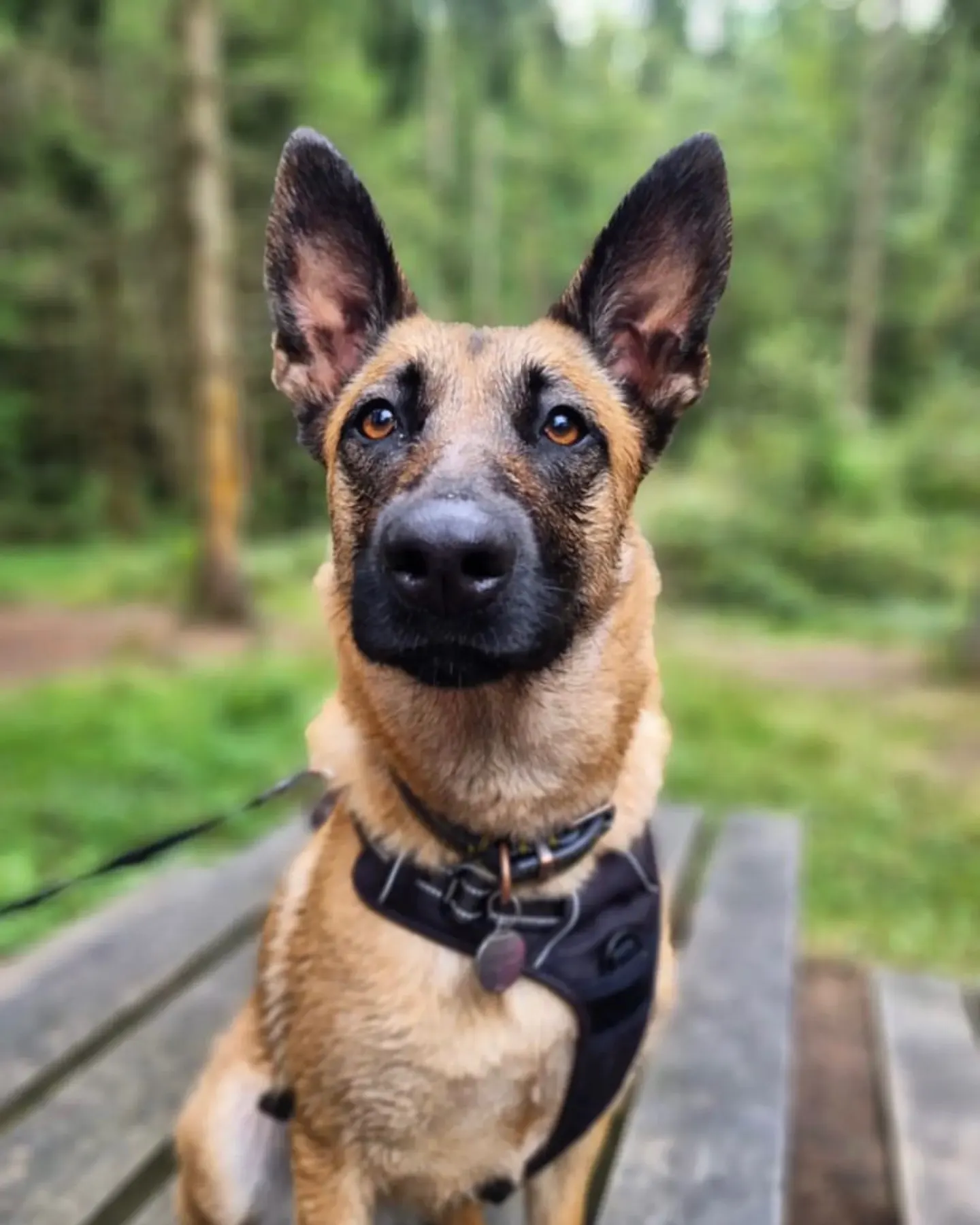
Source: Instagram (@connie_the_malinois)
Merle
Merle is regarded as one of the most gorgeous coat patterns. However, when found on a Belgian Malinois, the merle coat pattern could cause numerous health issues. A dilution gene, which affects not just your dog’s coat but all of its colors, is the cause of Merle. A puppy who receives the merle gene from only one parent is likely to have the particular pattern that gives him that distinctive appearance.
Merle appears as spots of various colors on a white background. Although more colors may be present, in most cases it will be a combination of three. They can also have heterochromia or blue eyes. A dog is said to be a “double merle” if he receives two merle genes, and these puppies will have white coats and vivid blue eyes. But besides the coat, the merle gene can affect the rest of your dog’s body as well, causing a number of different health issues. These include deafness, blindness, and even some bone conditions like elbow dysplasia.
White
White is pretty common in some dog breeds, like Poodles. But when it comes to Mals, a white coat color is a huge red flag. As we have already explained, double merle genes cause your dog’s coat to appear white. A dog’s entire coat will be diluted if it is a double merle. These puppies are almost all deaf and have vivid blue eyes. Because double merles are known to have a shorter lifespan, the majority of ethical breeders don’t breed them.
Albinism may also be a contributing factor in white Belgian Malinois. A dog with this disease is born completely without any pigment. These Mals typically have pale eyes with pink noses. Numerous health complications, including blindness and heart problems, are also associated with albinism. This is one of the key arguments against the purposeful breeding of albino Belgian Malinois.
Bicolor
Bicolor Belgian Malinois are frequently searched for online because people believe they are rare. The majority of Mals are, in fact, bicolor. This is due to the fact that the black mask is required for the majority of coat colors. Your Belgian Malinois will automatically be deemed bicolor if this is the only factor present.
You’re most likely searching for a Belgian Malinois with three colors. A dog has a base coat color, black ears, and a mask, as well as a third color somewhere else on its body, in this case. Tricolor Belgian Malinois are more common than you might think. Small white markings can be found on the bodies of many Mals, generally on the chests or stomachs. Generally speaking, as long as these markings don’t dominate or stick out too much, the breed standard permits this.
Color: Does It Really Matter?
There are several myths about how a dog’s coat color influences its behavior. For instance, many people still fall for the myth that black dogs are aggressive. The truth is that a dog’s coat color and pattern have little bearing on how they behave. The quality of a dog as a pet depends on how well you train him. Even while certain characteristics can make a difference, it all depends on the particular dog and how well you’ve cared for him.
On the other hand, a dog’s coat color may have a slight impact on its health. As previously established, some Belgian Malinois hues are linked to a higher risk of a variety of illnesses, including vision and hearing impairments. Any dilution gene in a dog, including the liver gene, could increase your dog’s risk of developing health problems. Although it’s debatable whether these health issues can affect a dog’s behavior, a Belgian Malinois’ ability to be a nice pet or not depends totally on the dog, not its coat color.
Do the Colors of Belgian Malinois Change Over Time?
The Malinois dog breed is not one of those noted for having variable coat colors. A puppy will likely maintain its appearance throughout its entire life. To put it another way, a black puppy won’t fade and turn mahogany, just as a fawn puppy won’t miraculously turn red.
However, throughout time, particularly with the move from puppyhood to adulthood, the precise coat color may alter. However, just because a dog is finishing puberty won’t lead it to completely change color. Before you go, let’s talk a little about Belgian Malinois dogs’ eye and nose colors.
The AKC and the majority of other significant kennel associations specify that Belgian Malinois should have medium-sized, slightly almond-shaped eyes. They cannot in any way, shape, or form protrude. Most Belgian Malinois dogs should have dark brown or even black eyes. Only the liver and grey Malinois deviate from this rule; these dogs’ eyes can occasionally be a lighter shade of blue or amber. All of this is a result of Mals’ lighter eyes being caused by the dilution gene.
The majority of Belgian Malinois should also have a nose that is dark or black. Grey and liver dogs, however, may experience dilution, which will brighten their noses. Even while some puppies have discolored spots on their noses that give them a distinct appearance, this nevertheless raises the possibility that your dog will eventually acquire a health issue.
Which color of Belgian Malinois should I choose?
Now, we aren’t the ones who can tell you which Belgian Malinois color would be best for you. It’s completely up to you and your personal preference. Some might prefer a black Malinois, while others will opt for fawn or red. But don’t be too superficial when choosing a puppy, after a while, you won’t even notice the color of his coat. Instead, what really matters is how the two of you get along.
However, we would highly suggest picking one of the AKC-recognized colors. While merle or white Mals do look absolutely stunning, the chances of them being sick are just way too high. Most reputable breeders don’t even breed puppies with these coat colors, and while you will have a rare dog, chances are that he won’t stay too long with you, due to his poor health. Always make sure that you ask for documentation proving your future dog is healthy.
Also, consider the fact that the rarer the coat color of your dog is, the more expensive the puppies are likely to be. Sure, when buying a puppy you are only looking at a one-time expense. However, having a dog is expensive enough as it is, and if you just want a Mal, and you don’t really care too much about the color, choose a fawn puppy, as they will be the easiest to come by. Therefore, these puppies are most likely to be less expensive as well.

